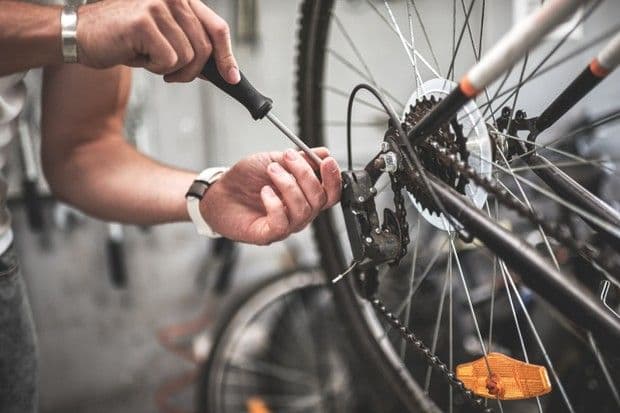A Comprehensive Guide to Maintaining Your Mountain Bike
Unlock optimal mountain biking with our guide: Maintain your bike's performance, from pre-ride checks to professional servicing so you can rip and send it all year long
A Comprehensive Guide to Maintaining Your Mountain Bike
The Significance of MTB Upkeep
Ensuring your mountain bike's optimal condition is essential for extending its longevity and enhancing your riding experience. Due to the unique demands of mountain biking, your bike and its components face higher levels of wear and tear. Embracing proper maintenance using basic tools is key to ensuring top-notch performance and consistently enjoyable rides.
Crucial Components Requiring Attention
Much like caring for an automobile, certain parts of your mountain bike demand regular maintenance, others require periodic attention, and some simply need visual checks or occasional adjustments. Regular pre-ride and post-ride inspections are pivotal in keeping your bike in peak condition. Attending to any potential anomalies that affect your bike's performance is vital.
Components necessitating regular or periodic maintenance include:
- Drivetrain: Chain, derailleurs, shifters, cables, chainring, cassette, bottom bracket
- Brakes: Brake pads, disc rotors, brake system
- Suspension: Fork, rear shock (for full suspension MTBs)
- Frame: Headset bearings, pivots (for full suspension MTBs), dropper post (if equipped)
- Tires & Wheels: Tire pressure, tire wear, tire sealant (for tubeless setups), spokes, bearings, axles
Your MTB Maintenance Schedule
The maintenance rhythm for your bike can vary based on its components, yet adhering to the following schedule will significantly contribute to your bike's performance and your trail enjoyment:
Suspension components usually have specific service intervals, often measured in hours. If you track your rides on platforms like Strava or Hubtiger, tracking hours is easy. For those without tracking tools, calculate a service interval based on your monthly riding frequency and ride durations. Avoid neglecting suspension servicing, as it can prevent costly repairs down the line.
As the saying goes, prevention trumps cure. Avoid waiting until suspension issues arise, as timely maintenance mitigates substantial expenses.
Pre-Ride Essentials
Before embarking on a ride, a pre-ride checklist is essential:
- Tire pressure: Verify correct pressure
- Wheel spin: Wheels should spin freely, without rubbing brakes or wobbles. Address bent brake rotors.
- Chain: Ensure proper lubrication
- Axles: Confirm secure attachment, particularly with quick-release axles
- Brake check: Verify brake functionality; wipe rotors with isopropyl alcohol if contamination causes squealing
- Bounce test: Lift each end of the bike around 8 inches off the ground and drop it, listening for unusual noises or loose parts.
Additional checks for bikes left idle:
- Dropper post: Confirm functionality and snappy return from the dropped position
- Suspension: Adjust air pressure if necessary; check sag
- Shifting: Cycle through all gears to ensure smooth shifting
Post-Ride Practices
Conduct the following after completing your ride to ensure a seamless next outing:
- Clean your bike: Depending on terrain conditions, cleaning could be a quick task or more extensive. Swiftly clean your bike after muddy rides to prevent mud from drying and causing damage.
- Chain care: If drivetrain cleaning is required, ensure the chain is clean and properly lubricated. A wet chain that isn't cleaned and treated may corrode, reducing chain lifespan and impacting the drivetrain's longevity.
- Visual inspection: Give your bike a quick look-over, focusing on the derailleur and cassette area, as issues here escalate swiftly.
Additional Checks
After approximately every 10-15 rides, consider these additional checks, particularly if you ride aggressively:
- Chain stretch: Use a chain checker to gauge stretch. A stretch exceeding 0.5 indicates a chain replacement.
- Headset: Confirm tightness by squeezing the front brake and attempting to rock the bike forward and backward. Loose movement could indicate a headset issue.
- Derailleur: Verify proper shifting; address cable adjustments if needed.
- Brake pads: Check for wear, especially after rough rides that accelerate wear.
- Suspension: Inspect for abnormal wear or excessive oil leakage.
- Pedals: Lightly lubricate moving parts if using clipless pedals.
- Wheels: Confirm true alignment, focusing on the rear wheel due to higher stress. Check for lateral movement.
Biannual Service Check
Seek professional service twice a year, focusing on these aspects:
- Cables: Adjust shifter cables, particularly with newer cables that experience initial stretching.
- Cassette: Check for wear, as a stretched chain accelerates cassette wear.
- Bearings: Inspect for wear, ensure proper greasing, and clean dirt from pivots and bottom bracket areas.
- Tires: Assess tread wear and dry rot signs.
- Sealant: If running tubeless tires, check and replenish sealant if necessary, especially in dry climates.
Annual Service
At minimum, arrange professional service annually, which may include brake bleeding and suspension servicing depending on ride hours.
Routine Observations
Periodically inspect your bike for unusual wear, sounds, or component issues during rides. These observations can detect early wear-out signs. Areas such as chain, cassette, bottom bracket bearings, and suspension linkage are common areas to monitor. Use a torque wrench to confirm bolt and axle tightness.
Professional Servicing Timing
In general, aim for biannual professional servicing at your local bike shop. At least an annual service is recommended to ensure proper functioning, replace wear items, and address potential issues like worn bearings or wheels needing truing.
By following this comprehensive guide and adhering to a regular maintenance schedule, you'll uphold your commitment to maintaining your mountain bike and elevating your riding experiences. Prioritize a well-kept bike, and your adventures on the trails will remain memorable and exhilarating.